Table of Contents
The Chief Executive:
The Chief Executive occupies a position of central importance in the administration and works at the topmost level of the organizational hierarchy. As the head of the administration, the Chief Executive has the power to direct, supervise and control the whole administrative machinery of the state. He is to provide leadership to the whole administrative management and machinery. The administration always bears the stamp of his personality.
Highlighting the importance of the Chief Executive, Nigro writes, “The key figure in any undertaking, public or private, is the Chief Executive.” “The administrative structure of a government is often pictured as a neatly symmetrical Pyramid in which each stone is a unit of the executive branch and the capstone is the Chief Executive.”
The Chief Executive plays such an important role in the organization that the success or failure of any organization largely depends upon the quality and work of the Chief Executive. At the apex level of the organization, the Chief Executive superintends, directs, and controls the working of the entire administration.
American writers on Public Administration speak of the Chief Executive as the general manager of the state. Generally, the head of a well-organized private undertaking or a corporation is known as the general manager, and in this capacity, he supervises, directs, and controls the administration of the undertaking. Similarly, several scholars hold that the Chief Executive is the head of the administrative machinery of the state and hence can be called the general manager of the state.
With the expanding complexities of the functions of the modern state, it is the executive branch that has been becoming more and more powerful and active. A modern state assigns a variety of functions to the executive. As the head of the executive, the Chief Executive has the ultimate authority and power to get these functions performed fruitfully and efficiently. This has made the Chief Executive the most vital part of the government.
Chief Executive- Meaning:
The Executive is that branch of government that deals with the execution of laws and policies. It has the responsibility to enforce the laws, rules, policies, plans, and programmes of the government of the state. To a common person, the executive is the name of the government because of the administration of laws, policies, and decisions is carried out by the executive. He daily comes into contact with the executive and interacts with it.
As Nigro writes, “The executive branch of government in Public Administration is truly the visible form.”
The person or the body of persons who heads the administrative system of the country is called the Chief Executive. The administrative structure of a country is like a Pyramid, broad at the base, tapering upward, and ending in a single point at the Apex. The Chief Executive is the Apex of the administrative pyramid. He is the person in whom the executive power stands authoritatively vested for performing various functions. In brief, in every political system, the person in whom the constitution vests the supreme executive power of government is called the Chief Executive. In every public or private organization, the person who is at the top position of the administrative hierarchy having the major responsibility of carrying out the work of the organization is the Chief Executive.
In England, the Chief Executive is the Queen, in India, the President, and in Switzerland the Federal Council. In the USA, the president is the Chief Executive.
Types of Chief Executive:
The Chief Executive is the name given to the head of the administrative system of every country. Several different models of Chief Executive are working in different countries of the world. The type of executive varies with the form of government. In a dictatorship, the Chief Executive comes to power through a military coup or a civil coup. He works as the single powerful, unrestricted Chief Executive carrying out his functions in an authoritarian way. As against this, the Chief Executive in a democratic country is a popular and elected executive who carries out his functions in a responsible and democratic way.
A democratic country like India has a parliamentary executive while the USA has a presidential executive. In most of countries, the executive is singular but in Switzerland, the Chief Executive is a plural body. It has a collegiate character. Further, in some countries like France, a mixed type of executive- Parliamentary-cum-Presidential executive- is at work. In a parliamentary democracy, a distinction is made between the real executive and the nominal executive. In India, the President is the nominal executive head while the cabinet headed by the Prime Minister is the real executive. Likewise, in the United Kingdom, the Queen/king is the nominal or titular executive while the Prime Minister and the Cabinet are the real executive. In the USA, however, the President is the Chief Executive in name as well as in reality. This is always the case in a state with a presential system of government.
As such, several types of executives are at work in different countries. The following can be identified as the popular types of Chief Executives.
(1) Nominal and Real Executives- The difference between the nominal and the real executives is made only in the parliamentary system of government. In it, the head of the state, the president or the monarch, is the nominal Chief Executive, and the Council of Ministers headed by the Prime Minister is the real executive. All the powers are legally the powers of the nominal executive but are in practice exercised by the real executive. The nominal executive is not responsible for all those acts which are performed in its name by the real executive. The real executive is responsible for all the acts of the nominal executive before the legislature. In the Indian political system, the President is the head of the state and is the nominal executive, while the Council of Ministers headed by the Prime Minister is the real executive. The former is the ceremonial and dignified executive, whereas the latter is the real and powerful executive.
(2) Hereditary and Elected Chief Executives- When the Chief Executive assumes office by the law of hereditary succession, he is called a hereditary executive. When the executive is directly or indirectly elected by the people for a fixed period or even for life, he is called the elected executive. In Britain, Japan, and Malaysia the chief executives are hereditary. In India, the USA, Germany, and many other States there are elected Chief Executives. Where the executive head of the state is an elected head, the state is called a Republic.
(3) Single and Plural Chief Executives- When the executive powers are in the hands of a single functionary/leader, it is called a single executive. In India, Britain, the USA, Australia, France, and many other states, there are single executives. In India, all the executive powers are vested in the President. Article 52 of the Constitution clearly lays down: “All the executive power of the Union shall be vested in the President of India, who shall exercise it either directly or indirectly, through officer’s subordinate to him.” likewise. Likewise, Art. II of the US Constitution states: “The executive power shall be vested in the President of the United States of America.”
As against this, when the executive powers are vested in a group of persons or a committee, a council, or a commission, and are collectively exercised by all the members of the executive, the executive is called the Plural executive. For example, in Switzerland, all the executive powers have been vested in the Federal Council and these are collectively exercised by all its seven members. It is as such a Plural Executive.
(4) Parliamentary and Presidential Chief Executive- The distinction between the Parliamentary and Presidential executives is made on the basis of the relationship between the legislature and the executive.
(A) Where there is:
- a close relationship between the legislature and the executive and the members of the executive are also members of the legislature.
- the executive, for all its acts, is individually and collectively responsible to the legislature.
- the tenure of the executive is not fixed as it can be at any time be removed by the legislature.
- the legislature can be dissolved by the executive.
- the form of the executive is Parliamentary.
(B) In a Presidential Executive, on the other hand:
- there is a separation of powers between the executive and the legislature.
- the membership of the two is incompatible.
- the executive is not responsible to the legislature.
- the tenures of the executive and the legislature are fixed.
- none of the two can dissolve or remove the other.
The Parliamentary Executives are functioning in India, the U.K., Canada, New Zealand, Australia, and many other states. In the United States of America, the executive is Presidential. In France, there is a mixture of the two.
These are then the eight popular types of the executive. For describing an executive, this classification scheme can be used. For example, in the Indian political system, the executive is elected, singular, and parliamentary. In the USA, the executive is elected, singular, and presidential. In Switzerland, the executive is elected, plural and quasi-parliamentary, and quasi-presidential. In Britain, it is hereditary, singular, and parliamentary. In France, there is an elected, singular, and parliamentary-presidential mixed executive. In this way, we can use these eight forms to describe the executive of any state.
Functions of the Chief Executive:
The Chief Executive has to perform a number of functions. But the writers differ with regard to the nature and scope of the functions of the Chief Executive. Some hold that it performs only managerial functions while others hold that it performs managerial, administrative, and political functions. Luther Gullick opines that the Chief Executive performs the ‘POSDCORB’ functions, while Marshall Dimock summarises the function of the Chief Executive by observing: “He is the troubled shooter, a supervisor and a promoter of the future programmes.” Prof. Willoughby says that the primary duty of the Chief Executive as a general manager is that of seeing that the administrative affairs of the government are being honestly, efficiently, and economically run.
The Chief Executive is the head of the country and enjoys a wide variety of functions. His functions and role depend upon the constitutional provisions as well as on the form of government which is at work in the state. Normally, the chief executive at any level has a dual role to play i.e., political and administrative. As such, his functions can be discussed in two parts:
- Political Functions.
- Administrative Functions.
Political Functions of the Chief Executive- The Chief Executive obtains his office through the votes of his people. The source of his political power is constituted by the people. In a democratic system, people are the source of all power and authority. The authority of the Chief Executive also rests upon the people. The people and their elected representatives, who constitute the legislature, have to be respected and won by the Chief Executive. Thus, the Chief Executive needs the support of legislators and the people to successfully carry out his functions.
The Chief Executive has to perform his activities keeping in view the public interest and public opinion as well as the interest of the nation. He has to provide leadership to the nation as a whole. He leads the nation, particularly in times of crisis. His functions during an emergency become very large. He has to act decisively and efficiently. At the same time, he has to adjust, reconcile and accommodate the state management according to the wishes of the people. He has to attempt to secure a national consensus on major and delicate issues and problems before the nation. This he has to secure, without in any way compromising on matters of principle. Thus, political management is one of the most important functions of the Chief Executive.
Role of the Chief Executive:
From the above review of the functions of the Chief Executive, it can be concluded that the Chief Executive occupies a central position in the administration. He determines the goals, prepares plans, fixes priorities, take important decisions, coordinates work, appoints the personnel, motivates the personnel, and supervises the implementation of plans. The Chief Executive is the pivot around which the administration revolves. In many ways, his qualities and work determine the real performance of the administration.
In actual practice, however, the Chief Executive cannot perform all the above-mentioned functions himself. He has to depend on his subordinates among whom the work of the organization stands divided. He only gives a broad outline of the policies, leaving the details to be filled in by the subordinates. He has to depend upon the services of a large number of personnel working in the administrative organization, particularly upon those who work at the top levels of various departments and other units. The Chief Executive is a very busy person and often feels a paucity of time for bringing necessary and big changes in the policies and programmes of the administration. This compels him to make use of the services of a large number, a big team of officials. In many cases, the Chief Executive has to put his seal of approval on the recommendations of his staff. Formally, the decisions are made by the Chief Executive but his decisions get evolved out of various processes and as such, many officials in the hierarchy contribute to such formal decisions. He takes only the policy decisions or the major decisions and that too after these have been processed by his subordinates.
Marshall Dimock holds that the actual role of the Chief Executive is that of a “troubleshooter, a supervisor, and promoter of the future programme.” He has the prime responsibility of getting the work done. He has to administer the administrators. He delegates authority to them, coordinates their work, supervises them, and controls their work behavior. He has to keep their morale high and give them directions as well as a purpose for working effectively and efficiently.
His great quality really lies not In administering the work himself but in making others administer and carry out the work. He has to get things done and make things work.
The actual role of the Chief Executive in an administrative system really depends upon several factors:
- The nature of the administrative system he heads.
- The nature of the political system within which the administrator works, the form of government, and the nature of the legislature and the Judiciary.
- The level of development of the political system i.e., whether it is a developed or a developing or an underdeveloped one.
- His own personal qualities of head and heart. He should have, as Pfiffner observes, “an agreeable personality, ability to get along with people, initiative, ability to make a high percentage of correct decisions without undue delay and hesitation.”
Only a person of sound qualities of head and heart, a person of developed all-round personality can successfully discharge the functions of the Chief Executive. He has to be a man of knowledge, an expert planner, capable of timely and strong decision-making, prepared to delegate, able to coordinate and supervise, and above all a person with a good knack of public relations. He has to act as the leader, the troubled shooter, a supervisor, and a promoter of future objectives, goals, and programmes.

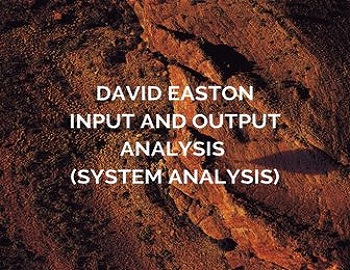
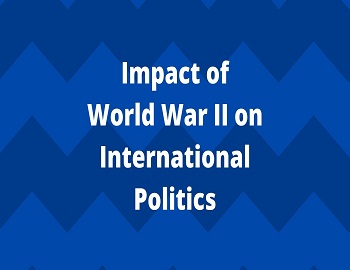

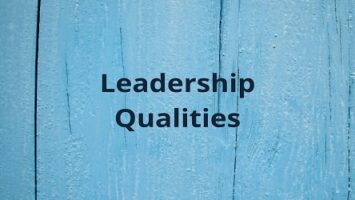
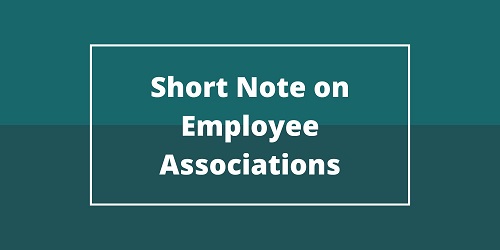
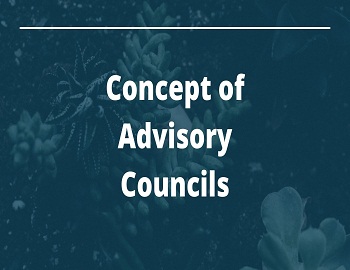
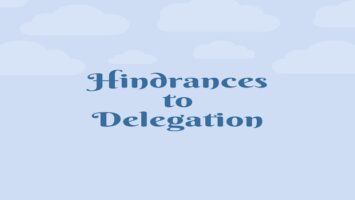

Comments (No)